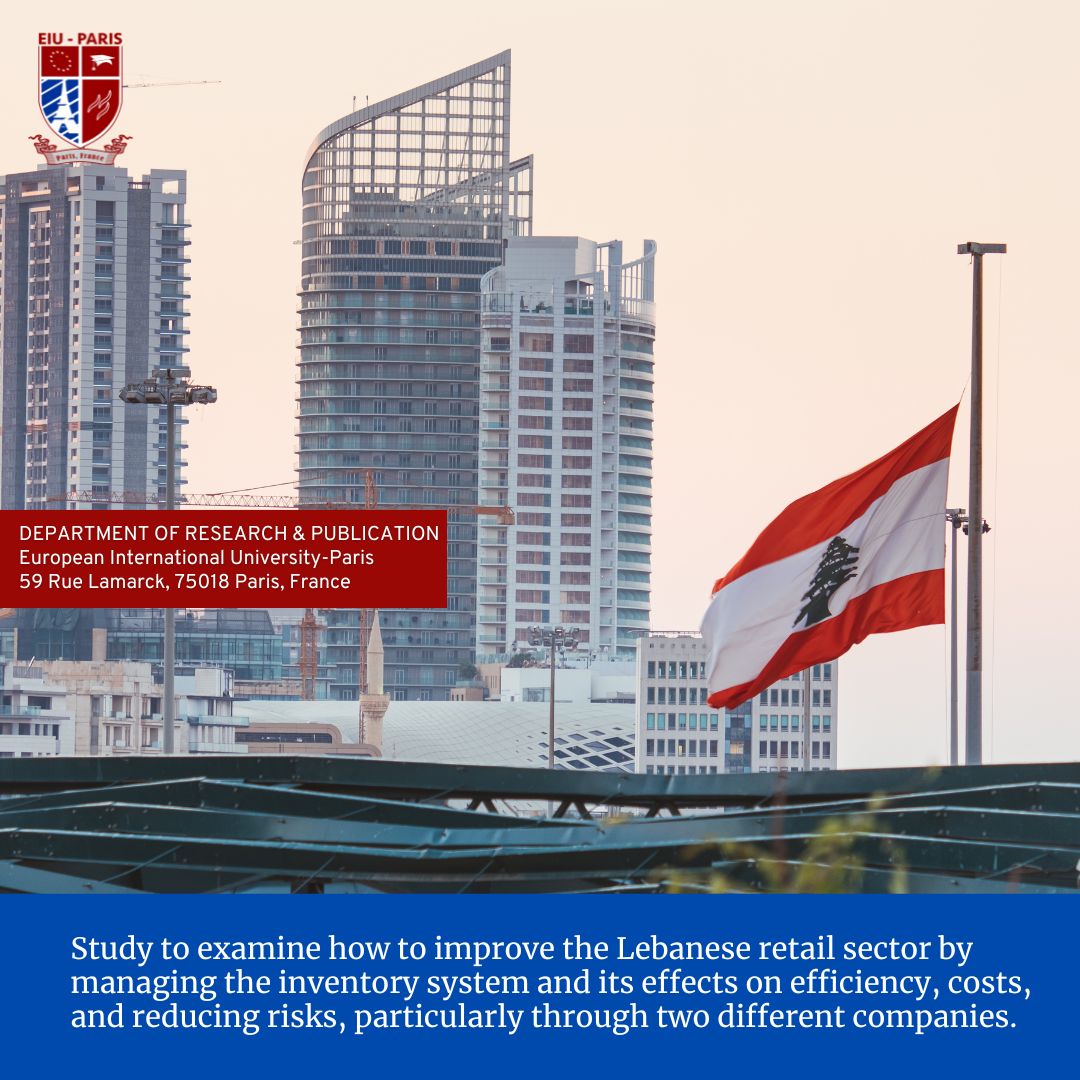- Version
- Download 3
- File Size 585.57 KB
- File Count 1
- Create Date July 24, 2025
- Last Updated July 24, 2025
Study to examine how to improve the Lebanese retail sector by managing the inventory system and its effects on efficiency, costs, and reducing risks, particularly through two different companies
The current study examines how to improve the Lebanese retail sector by managing the inventory system and its effects on efficiency, costs, and reducing risks, particularly through two different companies: Tawfeer International and Prologistics. Ten semi-structured interviews and 65 survey responses were done in combination with internal company documents. The results show a moderate positive link between IoT/AI integration and forecasting accuracy (r = 0.288, p = .004), and there were also some signs of a connection with reducing stockout and holding costs (r ≈ .17-0.19, p < .10). However, inventory optimization did not significantly impact operational efficiency (Model 1: R² = 0.025, p = .663) or cost reduction (Model 2: R² = 0.048, p = .319), indicating a disconnect between planning and actual results. Nevertheless, inventory optimization was found not to have a significant predictive effect on operational efficiency (Model 1: R² = 0.025, p = .663) or cost reduction (Model 2: However, we found no effect on cost reduction (Model 2: R² = 0.048, p = .319) or effect size (Model 1: R² = 0.025, p = .663), suggesting a gap between strategy and execution. By employing exploratory factor analysis, 8 components were found to explain 60.2% of total variance, grouping variables such as implementation, resource utilization, forecasting, and risk management. Conclusions based on qualitative data highlighted widespread adoption of ERP systems, JIT strategies, and real‐time tracking; however, technology integration challenges and limited staff adaptability act as barriers. Based on these results, the study offers four key recommendations.

Nassif Kobersy MGT590 Action Research MBA in Finance EIU-PARIS

